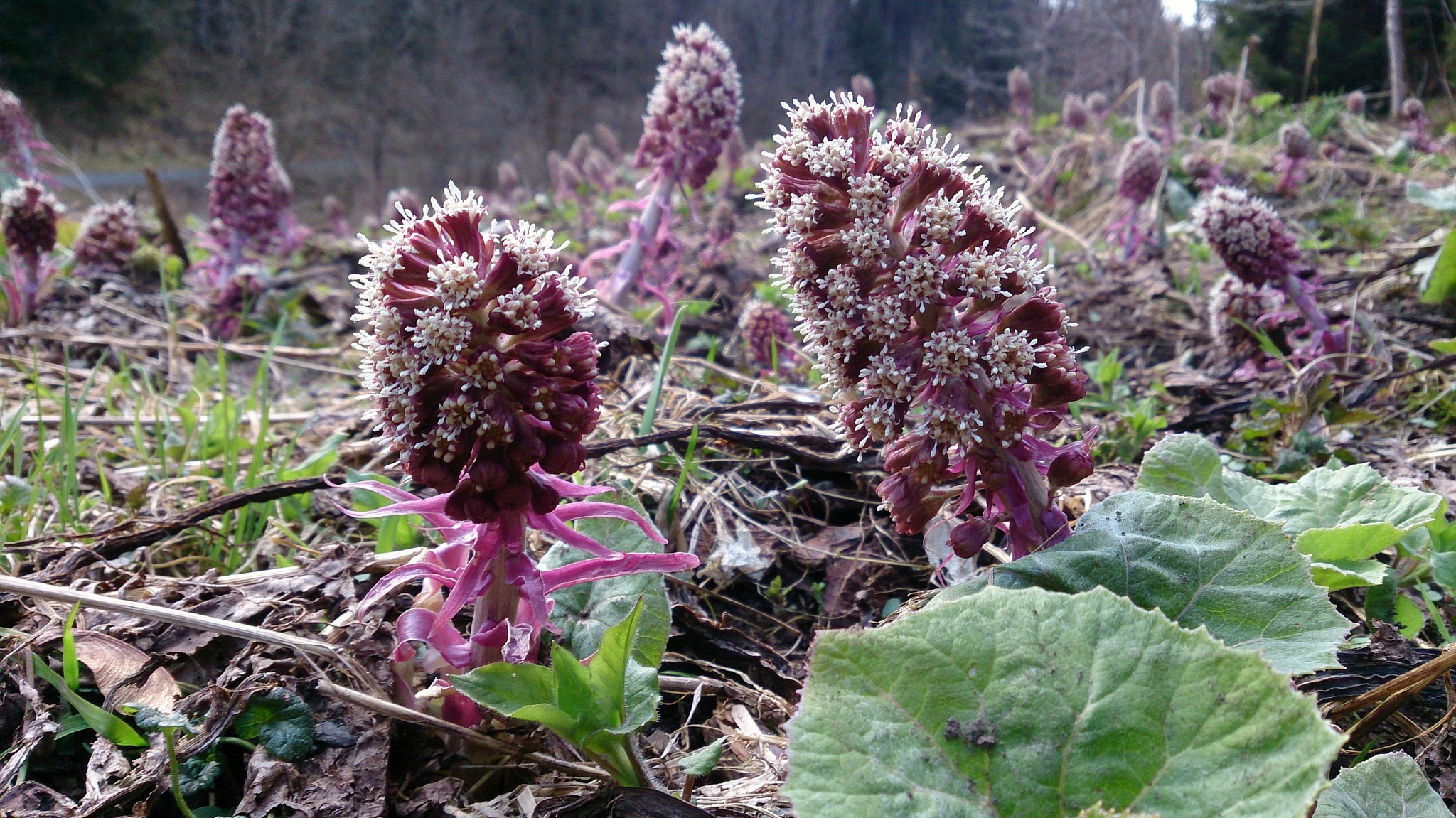Throughout most of the Northern Hemisphere including the U.S., Canada, and Europe, allergy season is already in full bloom as trees, grasses, and other shrubs release potentially irritating pollens into the atmosphere . For the substantial number of seasonal allergy sufferers, it appears almost as if these plant species are employing an insidious form of biological weaponry to defend their territory.
In many of the same regions, a second allergic onslaught is about to commence as ragweed pollen joins the chorus. For those individuals most sensitive to these biologic allergens (the so-called seasonal allergic rhinitis sufferers) numerous prescription and over-the-counter remedies provide varying degrees of symptomatic relief. Most popular among them are the anti-histamines, which generally block the chemical activity of the inflammatory mediator histamine. They achieve this by binding to H(1) histamine receptors on sensitive nasal tissues. Although anti-histamine usage dates back to the 1930’s, concerns regarding its side effects linger. Main side effects acknowledged by their makers include drowsiness, prostate enlargement in men, fatigue, mental confusion, memory loss, and fast or irregular heart beat. However, an even more serious question looms regarding their safe usage: given the important immune role that histamine and H(1) receptors normally play, do anti-histamines in any way compromise the ability of the human immune system to fight off other pathogens such as bacteria, viruses, or even cancer cells? In an attempt to address this often overlooked issue, Spanking FIT conducted an extensive review of the scientific literature. Surprisingly, we turned up a dearth of relevant serious experimentation. (Bear in mind that both prescription and over-the-counter anti-histamine products constitute established multi-billion dollar industries.) One exception was: “Effects of anti-histamine on innate immune responses to bacteria in mice” by M. Metz which was published in International Archives of Allergy and Immunology in 2011 (155(4): 355-60). The study itself is rather impressive experimentally in so far as it utilized mice which were genetically engineered to be deficient in H(1) receptors. Researchers reported that the use of anti-histamines adversely affected the ability of the mouse immune system to fight off bacterial infection. Unfortunately, due to small sample sizes used, solid statistical inferences could not be made. Further experimentation regarding this question is clearly warranted.
In addition to the anti-histamines, corticosteroid nasal sprays are often used to reduce the inflammation associated with allergy. Their acknowledged side effects include sore throat, coughing, and glaucoma.
It’s unsurprising that the previously explained health concerns regarding pharmaceutical products have generated renewed interest in so-called “natural” allergy remedies. Those medical practitioners, on the other hand, who strictly adhere to pharmaceutical approaches, vigorously criticize the more natural methods by citing a paucity of clinical data supporting their efficacy and safety. They correctly remind us that anecdotal evidence alone does not constitute legitimate justification for the use of any medicine. In response to all of the above concerns, Spanking FIT began by compiling a list of some of the most popular online natural allergy products. Some of them are even ancient folk remedies and sound like ones that “Granny” from the 1960’s U.S. T.V. show “The Beverly Hillbillies” would use. Next, I collected and evaluated modern clinical research supporting their efficacy claims. Let’s begin with the Granny list:
Granny’s list of possible natural seasonal allergy remedies
- Bromelain– an enzyme contained in the pineapple plant which is promoted as an effective anti-inflammatory.
- Butterbur (petasites hybridus) leaf or root extract- plant also goes by the names bog rhubarb, devil’s hat, and pestilence wort. It’s a member of the daisy (asteraceae) family.
- Cat’s claw (uncaria tomentosa)- a woody vine which grows in South American jungles.
- Echinacea– a genus of herbacious flowering plant that is also in the daisy family.
- Grape seed extract (procyanidin)- procyanidins are a class of flavonoids or secondary plant metabolites which protect from herbivores.
- Heart-leaved moonseed (tinaspora cordifolia)- ancient Asian Indian “remedy”.
- Pine bark (pycnogenol)
- Quercetin (a plant polyphenol flavonoid)
- Stinging nettle (urtica dioica)- herbaceous flowering plant
- Timothy grass (phelum pratense)
- Vitamin C (ascorbate)
- Vitamin D ( secosteroids)
Spanking FIT’s next goal was to filter out all anecdote associated with the above products, and identify and evaluate the results of pertinent clinical research only, if existent. We were able to accomplish that goal for only four out of the twelve possible natural allergy remedies on the list: butterbur, procyanidin, pycnogenol, and timothy grass. This is not to say that the others on the Granny list are ineffective in treating allergic rhinitis; but, simply that clinical evidence is currently lacking. In the course of my investigation, I also explored the proposed working mechanisms behind each one. Such mechanisms went beyond mere blockage of histamine receptors as most anti-histamines do. They include possible reduction in histamine production itself, as well as reduction in other chemicals known to be involved in the allergic reaction chain. In this segment (Part I) of “The Science of Seasonal Allergy Relief”, I begin by presenting the results of my investigation into butterbur:
Butterbur (petasites hybridus)
Of the more than fifty published studies evaluating use of butterbur extracts for allergic rhinitis which Spanking FIT identified, three principal ones involved analysis of hard data based on actual detailed clinical trials. They are summarized below:
- “Anti-inflammatory activity of an extract of petasites hybridus in allergic rhinitis” by O.A. Thomet,et al. published in International Immunopharmacology, June 2002
This clinical trial involved six subjects only. Five were confirmed to suffer from a variety of grass and tree pollen allergies. One was allergic to cat hair. Patients were treated each morning for five days using Ze339, a trademarked extract of butterbur. A number of both objective and subjective measures of the degree of allergic response were made before and after the treatment. Among the measured objective parameters was nasal airway resistance (N.A.R.). The latter is a measure of the degree of obstruction that is caused by an allergen. The researchers reported statistically significant improvements from baseline with respect to all symptoms including nasal congestion, rhinorrhea (runny nose), nasal itching, and sneezing. They also reported improvements in objective measures including quantities of nasal and serum histamine, leukotriene B4, and cysteinyl-leukotrienes. The latter two chemical substances are associated with prolonged inflammatory allergic symptoms. Pollen counts were carefully observed over the five day period, and it was claimed that no fluctuations occurred which could have confounded their results. Researchers also explored potential systemic immuno-suppressive effects of butterbur. No changes in blood leukocyte counts including lymphocyte numbers or functioning was detected. In other words, researchers reported that there was no evidence that medication caused any immediate degradation in the ability of immune system to combat other pathogens.
From a statistical perspective, their study suffered from a number of weaknesses. I realize that the majority of readers are not statisticians, but I state them any way for completeness: while I commend authors for their attempted use of nonparametric stat tests in lieu of parametric ones given small sample sizes, they incorrectly used a Mann-Whitney test for independent samples when, in fact, something like a Wilcoxon signed-rank test for dependent samples should have been used. Furthermore, since measurements were taken at six different times on the same group of subjects, multivariate analysis such as Friedman’s non-parametric version of repeated measures ANOVA should have been used. By increasing statistical power of tests, the use of larger sample sizes could have yielded more convincing claims regarding the lack of immune system degradation in the event the above preferred tests failed to detect significant differences. A control group also should have been included in the experiment to make accurate comparisons possible. Lastly, Spanking FIT uncovered an appearance of a conflict of interest on part of researchers, in so far as the study was supported in part by grants from Max Zeller & Sohne, the manufacturer of the Ze339 product.
- “Butterbur Ze339 for treatment of intermittent allergic rhinitis: dose dependent efficacy in prospective, randomized, double-blind, placebo-controlled study” by A. Schapowal, et al. published in Archives of Otolaryngology-Head Neck Surgery”, Dec. 2004, 130 (12): 1381-6.
In this experiment, 186 subjects with a confirmed history (for at least two seasons) of intermittent allergic rhinitis were randomly assigned to either placebo, a low dose of Ze339, or a high dose of Ze339 for two consecutive weeks. Pollen exposure was confirmed for each patient by cross-checking with online regional pollen count services. Subjective measures of allergic symptom severity based on patient diary entries and clinician observations were utilized. The main efficacy variable was individual change in self-assessment from baseline to end point (14 days later) in symptom severity for (1) rhinorrhea (2) nasal congestion (3) itching (4) sneezing. Scores were also combined into a “single global evaluation”. Hierarchical non-parametric hypothesis testing was employed, even though relatively large sample sizes of more than 60 were used.
Upon careful examination of the results which the researchers presented in tabular form, Spanking FIT detected a rather odd switch on the part of data analysts to parametric stat tests when dealing with the nasal congestion variable. It is possible that the non-parametric methods they originally tried may have failed to produce significant results. If so, researchers should have stated so. Also, the researchers did not report significance levels in analysis of differences, before and after, in combined symptom scores. Hopefully this was only an oversight on their part, and not a deliberate omission. Finally, once again it should be noted that study was funded by Ze339 maker A.G.Zeller.
“Petasol butenoate complex (Ze339) relieves allergic rhinitis-induced nasal obstruction more effectively than desloratadine” by A.F. Dumitru, et al. published in Journal of Allergy and Clinical Immunology, June 2011, 127 (6): 1515-21. This experiment utilized a double-blind randomized three arm cross-over design. The three arms consisted of (1) five day treatment with placebo, (2) five days with the anti-histamine desloratadine, or (3) five days with Ze339. At end of each five day period, a number of allergic reactivity measures were taken following an allergen challenge. Among the measures was nasal air flow as ascertained by rhinomanometry of patient nasal passages. Researchers reported significantly superior results in the air flow measurements of subjects treated with Ze339 compared to placebo. They also reported significantly lower levels of certain allergy mediators that suggested a physiological mechanism by which the product works. Specifically, they reported significantly lower levels of interleukin-8 (IL-8) and leukotriene B4 (LTB4) in nasal excretions before allergen challenge in the Ze339 treatment group by comparison with placebo. IL-8 is a so-called chemokine produced by endothelial tissue lining blood vessels which causes leukocytes to migrate there. LTB4 induces adhesion and activation of the leukocytes as they arrive at the endothelium contributing to inflammation. Both substances are responsible for any prolonged allergic response. There was, however, no drop in histamine levels reported in the Ze339-treated group compared with placebo. Interestingly, results indicated that not only was Ze339 more effective than the anti-histamine desloratadine, but that the latter was not effective at all when compared with placebo. Surely a surprising finding given the relative popularity of that product. From a statistical perspective, the study suffers from common flaws in medical research: since more than two populations were involved, a multivariate test such as Friedman’s should have been employed in lieu of the Wilcoxon signed rank test which was used. Also, the analysts conducted pair-wise comparisons of treatments using a parametric t-test with small samples and without the appropriate adjustments in significance levels a Bonferroni test or something similar could have afforded. Consequently, their conclusions did not possess conventional significance levels (e.g., P less than 0.05). Finally, there is the same conflict of interest concern, because A.G. Zeller provided funding.
Conclusions regarding Butterbur
Butterbur extract is among only a handful of online recommended natural remedies for which clinical trials regarding efficacy have been conducted and completed. Results tentatively support the theory that it is effective in the treatment of allergic reaction and related symptoms including rhinitis, sneezing, itchy nose and eyes. Analysis of relevant data tentatively suggests that it may work by inhibiting production of certain chemical substances known as leukotrienes and cytokines which contribute to inflammation. Nevertheless, the research suffers from flaws in statistical design and analysis which are common throughout modern medical research. (This comes as no surprise to readers familiar with our previous evaluation of work in the field of natural amino acid therapy for other medical conditions-see “2016 Discoveries Made by Spanking FIT”.) They include the use of inadequate sample sizes and inappropriate statistical tests. These noted weaknesses do not, in my opinion, completely undermine the case for butterbur efficacy; rather, they call attention to the need for independent funding and undertaking of large-scale clinical trials to evaluate butterbur as well as other “natural” therapies. Also, medical journal editors need to make it mandatory that all published research provide links to raw data collected so that independent statistical analyses may be conducted. I should note that my colleagues and I have tried butterbur and have personally found it to be effective for allergic rhinitis. However, as previously noted in Spanking FIT’s ABOUT US section, anecdotal evidence alone never justifies the use of any medical product including this one.
As usual, I look forward to your valuable feedback. Please stay tuned for my evaluation of the three other possible allergy remedies on the Granny list: procyanidin, pycnogenol, and timothy grass. Sincerely, Dr. Garrett




